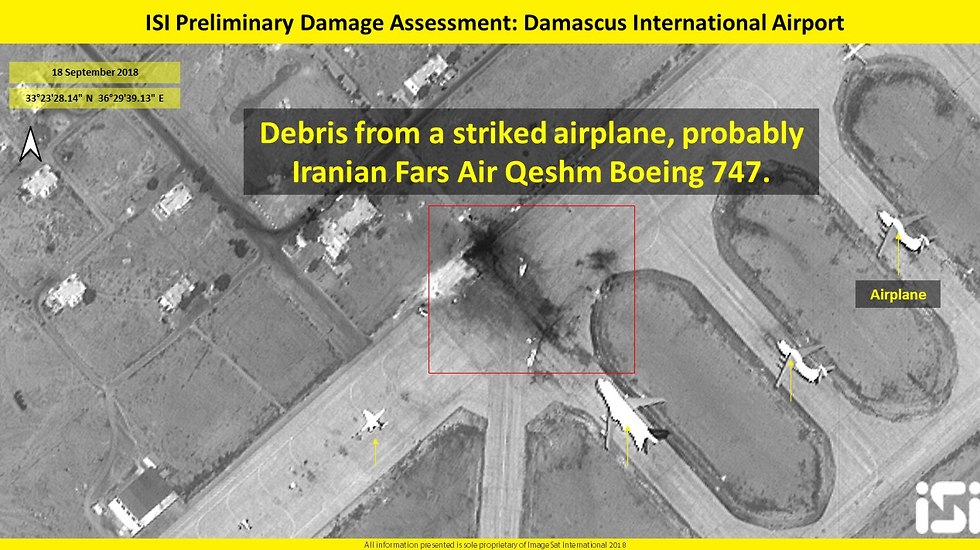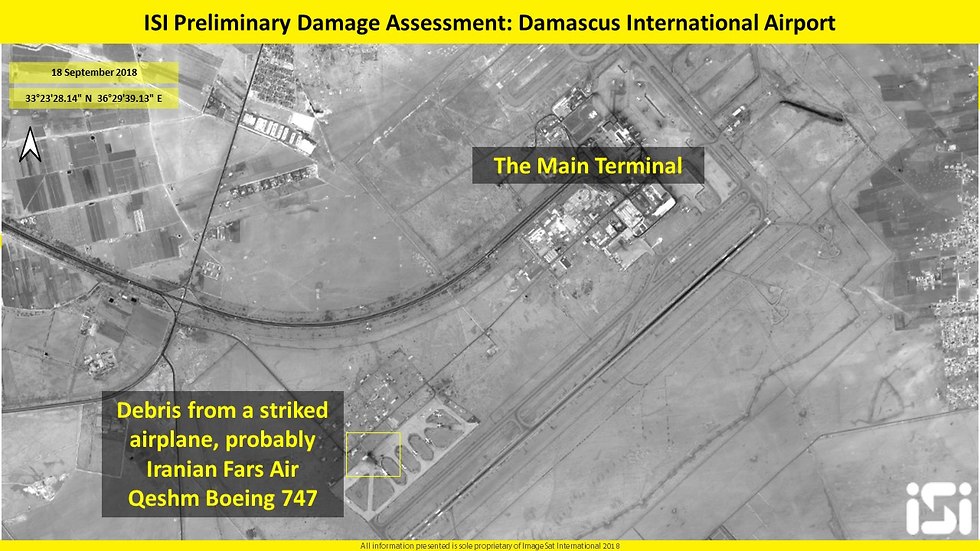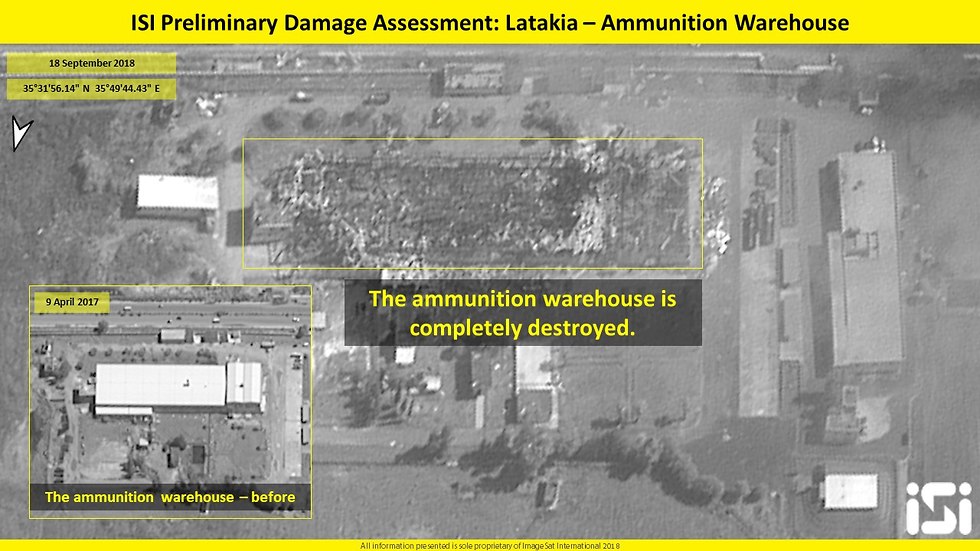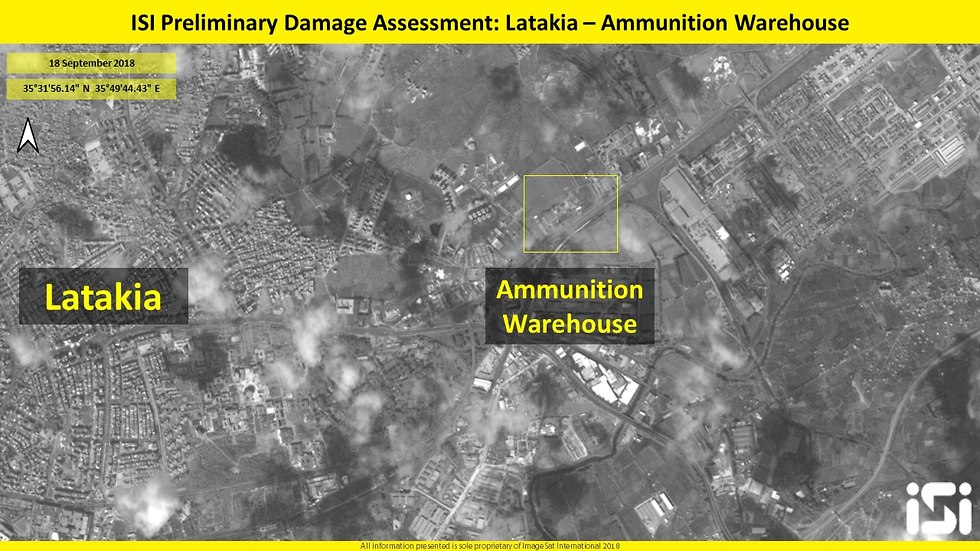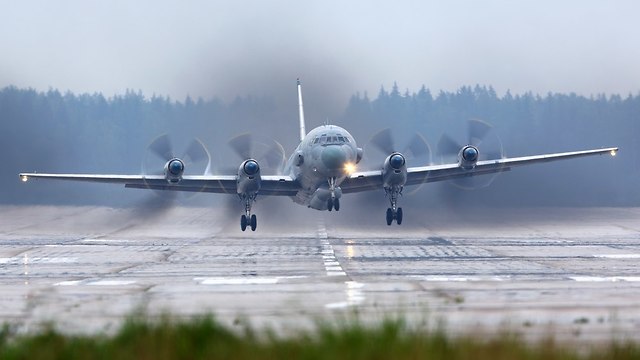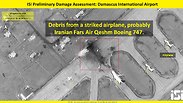
Images: IAF's Latakia strike took out a rocket factory
Amid crisis between Russia and Israel over downing of Russian spy plane, newly released satellite images show Israel's initial attack in Syria wiped out an ammunition depot, military factory and Boeing 747 of Fars Air Qeshm—Iranian airline affiliated with country's Revolutionary Guards.
Satellite images of recent Israeli airstrikes in Latakia, following which a Russian spy plane was shot down leading to an international crisis, show a military rocket factory and a 155 by 35 meters ammunition depot were completely wiped out.
In addition, satellite footage of the attack on Damascus International Airport were published, showing the remnant of an aircraft, apparently Boeing 747 of Fars Air Qeshm, an Iranian airline affiliated with the Islamic Revolutionary Guards.
After launching an investigation into the incident, the Kremlin published Sunday its findings.
According to the Russian Defense Ministry's report, the IAF deceived the Russians by presenting false information regarding the area in which the strike in Latakia was planned on September 17 which prevented the Russian plane from leaving the danger zone.
According to a statement issued by the IDF after the attack, "The IDF aircraft attacked a facility from which the Syrian army intended to transfer systems for manufacturing high precision-guided weapons for Iran and Hezbollah.
"The weapons is meant to attack Israel and constitutes an intolerable threat to it," the IDF said.
Israeli Air Force chief Maj. Gen. Amikam Norkin presented on Thursday findings in Moscow related to the downing of the Russian plane.
The findings were presented at a special meeting held in Moscow, after the head of the defense ministry in Moscow accused Israel of indirectly causing the downing of the Russian reconnaissance plane.
According to the report, the coordination system between the IDF and the Russian army prior to the attack operated according to procedure and fixed orders, as shown in more than 200 similar attacks in the last two years, with an emphasis on recent attacks.
The report added that the Syrian air defense system operated several anti-aircraft batteries deployed throughout Syria.
These batteries fired for more than half an hour, even while the Israeli fighter jets were en route to Israel.
According to the IDF maps presented to the Russians, there was no room for doubt: the Syrian anti-aircraft attack included dozens of missiles of various sorts, including the advanced Soviet S-200 missile that downed the Israeli fighter plane in the Galilee in February.
The Syrian warplanes fired missiles in all directions: south towards Lebanon, east to Syria, and west towards the coast—where the Russian plane was shot down. The Israeli report argued that this multifaceted attack demonstrates the Syrian army's "rampage."
The IDF Spokesperson's Unit said on Tuesday that the Syrian facility the IAF targeted was about to transfer weapons to Hezbollah on behalf of Iran.
Satellite images presented by the IAF prove that in contrast to the official footage released by Syrian media, the structures struck were rocket factories and not aluminum factories, as Assad's regime claimed.
For several years, Israel and Russia have maintained a special hotline to prevent their air forces from clashing in the skies over Syria. Russia has provided key air support to President Bashar Assad's forces since 2015, while Israel has carried out dozens of strikes against Iran-linked forces. Israeli military officials have previously praised the hotline's effectiveness.
But Russian defense ministry spokesman Maj. Gen. Igor Konashenkov on Sunday accused Israel of using the hotline to mislead Russia about its plans. He said the Russians were unable to get the Il-20 to a safe place because an Israeli duty officer had misled them, telling them of an Israeli operation in northern Syria while the jets were actually in Latakia, in the country's west.
Russian Defense Minister Sergei Shoigu said on Monday that Moscow will supply an S-300 anti-missile system to Syria within two weeks.
The anti-aircraft unit will reportedly be equipped with Russian tracking and guidance systems, and is intended to "calm down some hotheads" whose actions "pose a threat to our troops," according to Shoigu.
Weapons keep being transferred from Iran to Syria
It was reported last week that Syria's army Ilyushin Il-76 cargo aircraft are being routinely transferred from Iran to Damascus to supply Assad's army with arms and ammunition.
However, one civil flight—believed to be linked to Iran's Revolutionary Guards—which landed in the Syrian capital led to a new pattern of Syrian cargo flights near the Syria-Iraq border.
The aircraft took off at 4pm, and due to radar reception disruptions, it disappeared near the Iraqi border. The fact the plane landed back in Damascus at 8:30pm suggests it operated near the border.
On Thursday, Syrian planes were detected on their route to Teheran. At 8:30 an Ilyushin Il-76 cargo aircraft left for Iran's capital and returned with cargo to Damascus at 4pm.
Another plane departed from Syria at 6pm heading towards the Iraqi desert. However, contact was lost with the aircraft due to reception problems. At 10pm it returned to Syria.










